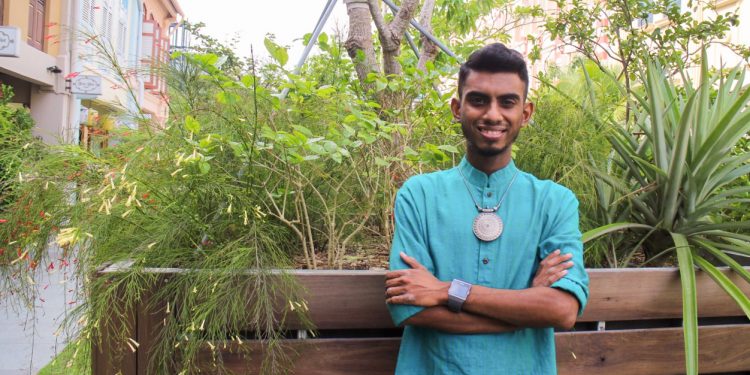Logendra Chandra Sehkar’s leap from the world of sports to dance was an unexpected one that began with a simple foray into the Indian Cultural Group as part of his CCA (co-curricular activity) when he was a 17-year-old student at Republic Polytechnic.
Having played badminton, squash and swimming during his earlier years in school, Mr Logendra considered himself a sportsman, but joined the Indian Cultural Group because of his friends.
Little did he know that it would mark the start of a lifelong passion. It was there that he met a teacher who would become both mentor and friend; one who was pivotal in shaping him as a dancer: Kavitha Krishnan, Artistic Director of Maya Dance Theatre.
His journey in dance continued well beyond graduation, as he was selected to join Aspire. Organised by the Maya Dance Theatre and supported by the National Arts Council, this programme aimed to hone young dancers and strengthen their versatility in their art through exposure to various dance forms.
Although he subsequently chose to pursue a Bachelor’s degree in Biomedical Science at the University of Queensland Australia in 2013, the young dancer’s connection to his art never faded. His summer break was spent teaching classes with Ms Krishnan in Singapore to prepare schools that were participating in the Singapore Youth Festival.
But teaching classes made him realise how much he missed dancing. “I was not very actively involved… I decided with a group of friends that ‘you know what, let’s just start our own initiative which is youth-oriented’,” he said.
This led to the founding of TATTVA, a youth-centric dance collective, in 2017. The collective infuses classical Indian dance form Bharatanatyam with contemporary dance elements, with the goal of rekindling Indian mythology. The 31-year-old took up the mantle of TATTVA’s Artistic Director and choreographer.
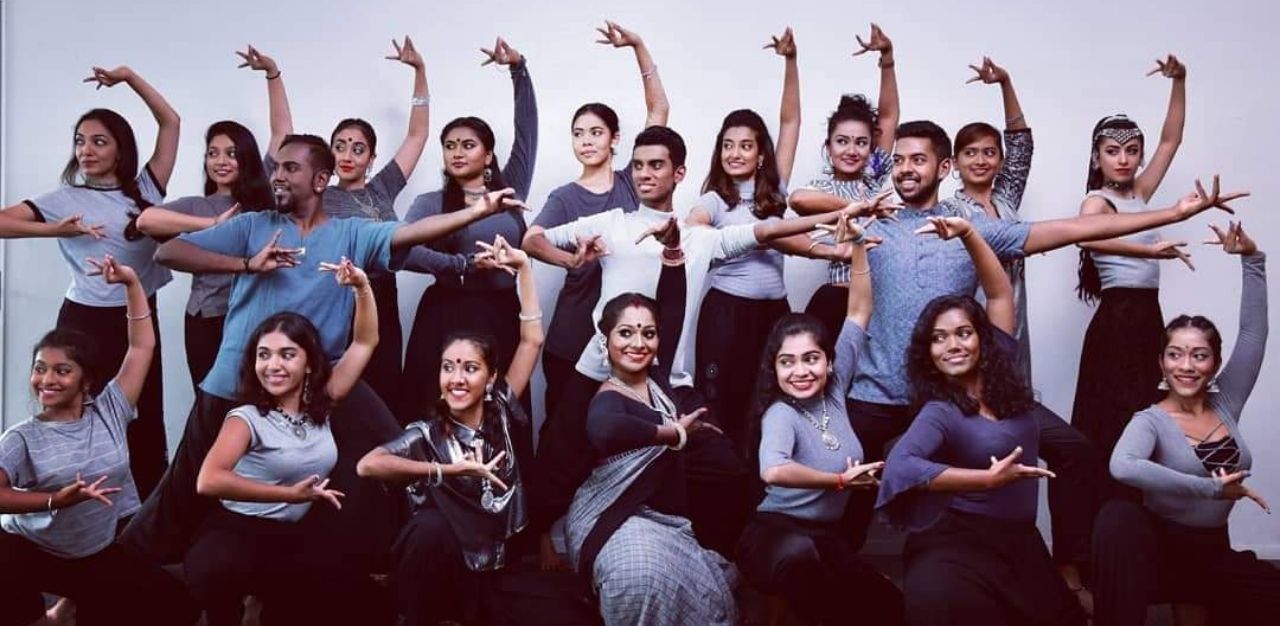
When conceptualising the choreography, Mr Logendra says that he takes inspiration from “many walks of life”. This includes watching a lot of videos for exposure, and incorporating ideas and techniques, whether traditional, modern or progressive.
“Choreography works in a weird way, because ideas work in a weird way. A choreography can only work with the right dancers, right setting, and the right concepts that come to mind.” he explains. “What is important is the concept, who you’re working with, your dancers, and your creative partners, whoever is co-choreographing with you.”
TheHomeGround Asia finds out what inspired his journey in dance, and what motivates him to continue pushing the boundaries with his art.
(NOTE: This interview has been edited for clarity and length.)
Logendra Chandra Sehkar: I always liked physical activities – what keeps your adrenaline rising, and the momentum going, adventurous stuff. For sports, the difference is we don’t need to look good. We only need to keep up [with] the momentum and perform. However for dance, we have two demands to fulfil, which is performing as well as keeping up to the physical demands. So what attracted me is aesthetics of dance with the physical demands of sports. Dance is also a kind of athleticism.
TheHomeGround Asia: What is the aesthetic appeal of dance?
LCS: Bharatanatyam is a traditional Indian dance. So it has a lot of rhythms in it. There’s a lot of agility, also a lot of robustness. They are two different things but they come into play at the same time. So if you know classical dance there is a lot of rootedness, which is groundedness, so we have a lot of footwork to do. But there’s also a lot of leaps and jumps, which is agility. So you have a combination of these two; it’s very interesting for me to play around in this space, and I was very attracted to it.
THG: Why did you choose to pursue Indian dance, instead of other dance forms?
LCS: I went into Indian dance because of my friends. Maybe it’s a calling that I had to be there at that time, and I had to be present to meet my teacher.
For Indian dance, what’s very interesting is it’s practised by a lot of males in India. However, in Singapore, there are very few male dancers. You see a lot of female artists. So there’s a lot of stereotypes about male dancers in classical Indian dance, but I think I was very inspired to break these stereotypes. Because the dance itself has a lot of masculinity aspects to it.
THG: What are some of these stereotypes, and how have you broken them?
LCS: That classical Indian dance has very feminine-oriented touches to their styles, as well as a lot of softness and gentleness. However, the softness and gentleness is always misinterpreted. Because a man can also be graceful, it doesn’t need to be a woman who always needs to be graceful. It’s how we utilise it and use it. So at the end of the day, it depends on the individual, being a male or female, how you execute the dance form.

THG: After you graduated how did your journey in dance continue?
LCS: I was picked by my teacher from the Indian Cultural Group to get groomed in her company. I trained in her company from 2008 to maybe 2011, 2012, [as] part of Aspire. It was endorsed by NAC (National Arts Council). We had to go through different dance forms, Bharatanatyam, contemporary dance, hip hop, even Indian folk [dance]. There [were] a lot of genres that I was introduced to.
I was performing for many events like productions by Maya Dance Theatre, and also other performances outside. I took a short break because I went to study – I did my degree in University of Queensland Australia, Bachelor’s in Biomedical Science. That was a break for me because I was overseas. I used to come back for holidays and help my teacher teach schools [to prepare for] SYF (Singapore Youth Festival).
THG: What do you enjoy about working with youth?
LCS: We all have the same mindset, because I was considered a youth then too – I think I am still, [as I’m] below 35. I think a lot of youth out there are talented, but they don’t have avenues to explore and perform. So what TATTVA aims to do is to collaborate with these youth and understand what they [would] like to explore in a classical genre that can be structured in a contemporary way, because I think as we evolve, keeping the traditions and also respecting the art form is one, but also being creative is another. So, I think youth these days are crazy-minded, you know, very creative. What inspired me is how we’re very fresh about ideas, to even older concepts.
THG: How does TATTVA explore that?
LCS: TATTVA’s branding is basically rekindling Hindu mythologies or Indian mythologies. So what we do is we take traditional repertoires, or traditional concepts, but we renew it or make it fresh, [so] that is very appealing to the younger generation, because we want to attract [them]. We feel that in Singapore, a lot of the younger generation are losing touch with our culture, especially for Indian culture. They’re losing touch, they don’t know their mythological stories; mythological stories have a lot of morals, which are even applicable for today. So what we’re trying to do is we’re trying to make it as creative as possible to put more possibilities in the contemporary space to get the message out. So what we essentially try to do is to also tie it to social issues that’s happening today. That’s TATTVA’s aim in the long run, where we are trying to bind social issues with traditional concepts, and make it creative for the audience to enjoy.
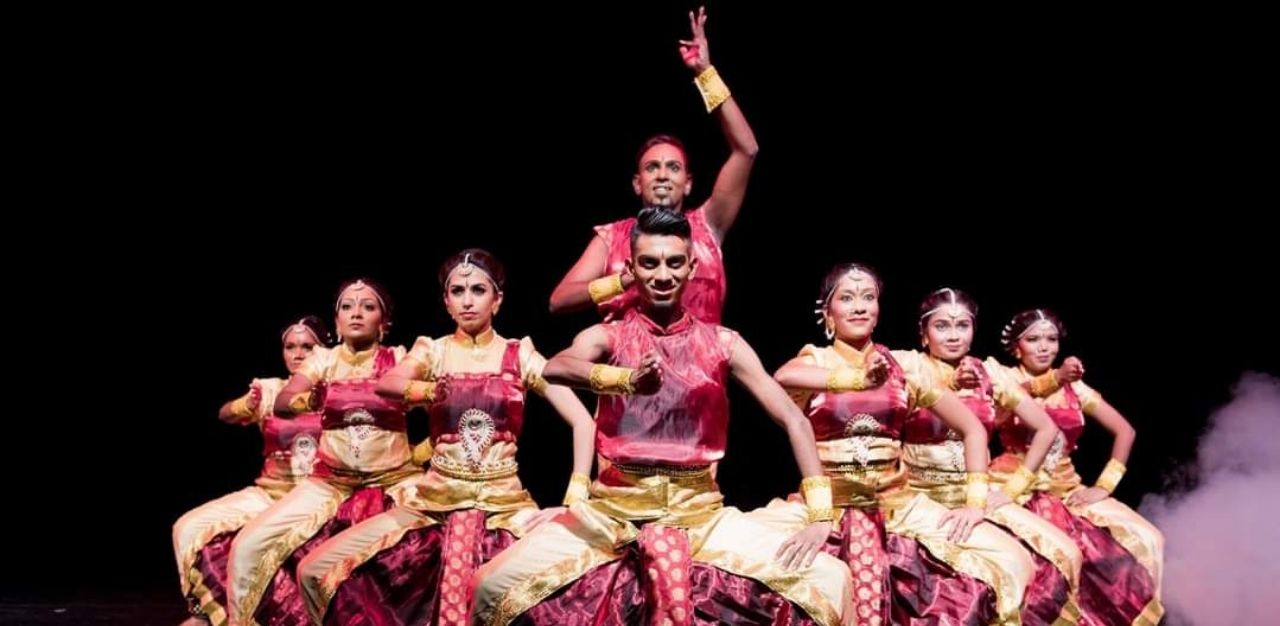
THG: What are some of your most memorable performances? And what are some examples of the social issues that TATTVA’s performances explore?
LCS: TATTVA has by far done two major productions till Covid-19 came.
In 2017, we did our first debut production, and the second one in 2018. The 2018 [production] is tied to a social issue, which talks about Maya. Maya means ‘illusion’, how we are bound by illusions. So we have certain negative qualities in our mind, like lust, temptation, envy and greed. How these have toiled even a good human to do negative stuff. So we picked up mythological characters that are negative in nature, but we [portrayed] them in a way where it doesn’t show them negatively; it shows them as a clean slate. So [we explore] how this illusion influenced them to become who they are, so it’s not their fault.
THG: After you started TATTVA, did you still continue to work with schools within the SYF circuit?
LCS: Yes. So concurrently with TATTVA, even though it’s not my full-time [job], I’m [an] MOE registered [dance instructor]. I have been working with SYF schools for the past five or six years. Essentially, I train with my teacher, because both of us take the SYF school together. It’s Anderson Junior College. So I’ve been [coaching] their Indian dance [CCA] for the past five or six years.
THG: How did the pandemic affect that?
LCS: With Covid-19 around, there are a lot of restrictions. We’re given only a limited number of days to train with them, and also designated dates. I think the problem [is with] running classes [on] Zoom, via virtual [platforms]. Dance is something where, as much as we’re trying to be accessible, [and] trying to adapt, corrections, especially [those] based on techniques, can only be done physically. As much as you say it on Zoom, and [look at] choreographic patterns or formations, it’s very hard to do it on Zoom, or on [an] online platform.
That’s definitely the biggest challenge; we are all learning. I think artists go through a lot during this time. We go through a change of artistic phase, to put [our art] into [an] online platform.
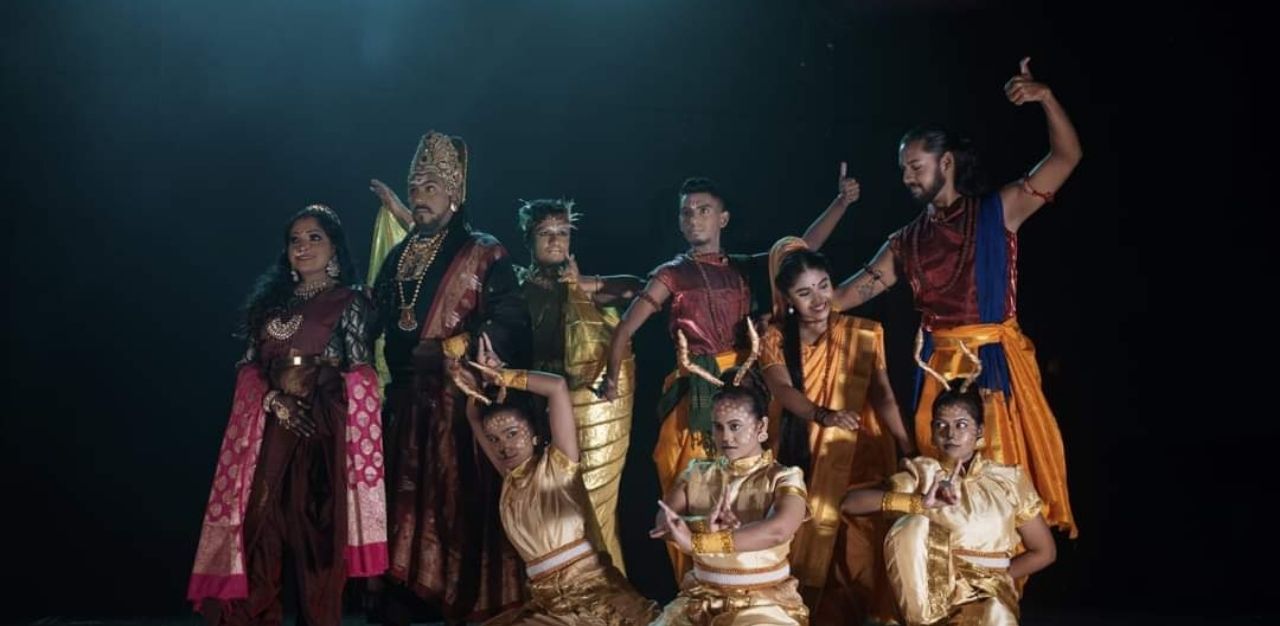
THG: Do you find that these same challenges were something you also experienced with TATTVA?
LCS: For TATTVA my formula is very simple. Because we are not full-time, we’re semi-professionals, we pick and choose our projects. I’m not obliged to perform for a lot of programmes or put up material that is just too much in a year. With Covid-19, [performing on a] digital platform gave us an upper hand. We did two projects with the National Arts Council under the Digital Presentation Grant.
One was very dance-based. It was an adaptation of [an] old production about Maya, the illusions. It was called TATTVA Chimera. That was one that we extracted group works into solo explorations. If you’re in a solo exploration you don’t need to mingle with anybody. You work from home, essentially. So [the dancers] did their own homework, and derived these choreos into a solo repertoire.
Another one we did was a documentary… about the guru-shishya. Guru-shishya means ‘teacher-student relationship’. So in this aspect we were giving respect to our teachers. We did three case studies on three of our dancers, who were very willing to talk about the teachers, and teachers also very willing to come and share the space with us, and talk about their relationship with us as well. So, for myself how would I start [dancing] because of my relationship with my teacher, that inspired me to start, and how well has it bloomed, how the next generation can [continue].
THG: And that’s important to you, having this continuity across generations?
LCS: Yes that’s right. One of the basic concepts or aspects of Bharatanatyam, the teacher-student relationship. It’s always preached or taught to us in a way that the teacher, the guru, is very important to us because she guides the way. Not everything is through text or wordings, it’s by physical teaching, and also sharing. Even though I have moved away from the traditional aspect of Bharatanatyam to the hybridity of the traditional and the contemporary, I still follow my roots of the guidance of the teacher and sharing the relationship with her.
THG: What were some guiding principles your teacher taught you that still influence the way you choreograph, teach, and practice?
LCS: My teacher is my biggest inspiration. At the very early stage, I think teachers have already [imparted] their foundation on to you. They really taught you a lot of things like discipline and dedication, and how you ignite your passion towards something. That has had a strong hold on me from the start. Even if I have no time, or downtime, I always go back to her for rejuvenation. And to remind myself of why I started this, and what I’m going to do [about] the art, of the possibilities.
THG: What was one of your most significant memories with your teacher?
LCS: Every month, we always make time for each other, over tea, over cakes. It’s not a classroom setting, because I think our relationship is beyond that. I think the sharing that came outside class was more valuable to me than class; it’s limited. I’m only training based on techniques, and understanding my body and what I can do. But outside the classroom, support, discussing everything else in life, I think the opportunity [lies in] what has been established this far.
I always go to her place, which is the most important space for me to get inspired and have conversations about anything and everything. About the art, stories, and concepts, Hindu mythology, social issues, new projects that are coming up, what can we do differently to drive the art in a different way.

THG: Do you hope to have this relationship with any particular student of yours in the future?
LCS: What’s interesting now is, I think the idea of guru-shishya is what’s expected for the traditional fraternity, which is the traditional format. But I don’t train under the traditional format, I’m more focused or explorative in the contemporary climate. So we don’t really have this student-teacher relationship. All my dancers are my collaborators. I don’t consider them as my students. Even my SYF students that I teach in schools, I consider them as my working partners because we work together for an item. So for me it’s essentially a friendship that is built to artistry and I think it’s a strong formula that has [driven] me.
THG: Why did you choose to move into choreography? Do you miss dancing?
LCS: I love exploring and I love creating something, it gives me a lot of satisfaction. Another reason why I want to choreograph, especially with TATTVA, is to give an alternative voice to a certain concept.
Yes I miss dancing, I don’t dance as much as last time, but that doesn’t mean I don’t dance. I do. But I enjoy creating something, or creating a piece and putting my dances out, rather than me dancing and performing, because I think I have done it in my early years. But personal satisfaction is to create something and look at that choreography again and again.
THG: How does it feel to see your creative vision come to life on stage?
LCS: There’s two ways of looking at it. One is results-oriented, [the other] is process-oriented. Looking at the final product, I’m almost always content. Sometimes it’s not, because I think I could have done better. But for me I think the result is secondary. The process is primary. Because the process gives you an intimate space with the dancers, I’m just with them in creating. While we’re creating it’s trial and error, there’s so many things [to it]. The result is just one aspect.
But certain things are lost. I cannot put everything down in the final product. So the beauty [lies in] seeing the process as a whole. And then the final product together, which only me and my dancers would understand. The audience only sees the aesthetic value of it, maybe the message, or the form. But the beauty of how I see this, is [in] the process.
THG: Have you ever tried choreographing for other dance forms? How is the choreography process different for Indian dance versus contemporary dance?
LCS: Personally, I know what I do and what I need to improve on, and what I always need advice on. [My strength lies in] Bharatanatyam, which is a traditional art form. But my creative prowess is also very strong.
I tend to think [beyond] the boundaries of Bharatanatyam. But I do not have the calibre to move as much in contemporary space, even though I can. I don’t have a very strong contemporary technique. So I fit the contemporary climate into my Bharatanatyam to make it a hybrid. You can see a 70 to 80 per cent proportion of the classical art form, in a 20 or 30 per cent contemporary space.
The way I have structured the [dance] can be refreshing like, ‘Hey, I’ve never seen this before, but they’re still doing Bharatanatyam.’ What is so different about it? Sometimes people come to me and go like, ‘Which is Bharatanatyam, which is contemporary?’.
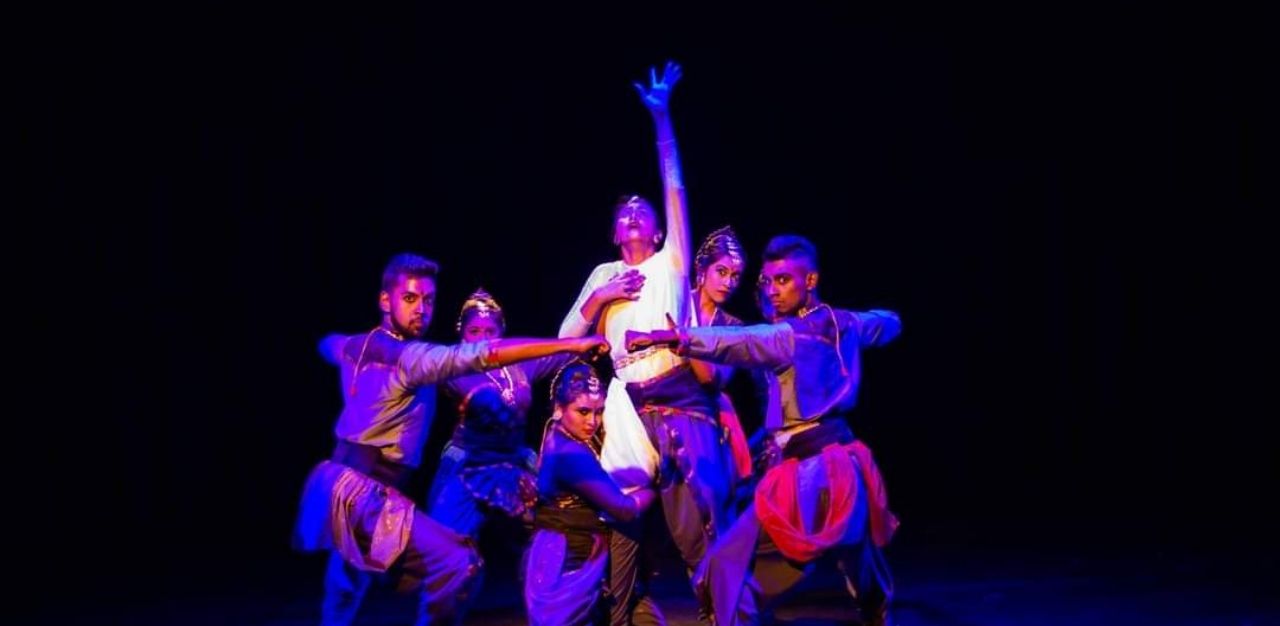
THG: What has the response from the Bharatanatyam dance community been like?
LCS: We have always mixed responses. People who love it, love how we have sold the idea of a traditional art form in a very contemporary setting, with a contemporary formula. They see it as fresh, new and creative, and they want to see more.
However with the older generation, there’s always a mix of opinions. Some of them really encourage what I do and support. Of course there’s some who [give] constructive criticism, how it’s supposed to be done this way and how it’s not supposed to be done that way. But I perceive it as opinion, because it could be a derivative from an orthodox mindset. So I think it’s taking in everything and seeing what works for you, what works for the branding of the company, that’s very important. And how we wish to deliver it. What gives you happiness.
THG: Can you tell us more about your full-time job? Are there any ways in which it intersects with dance?
LCS: I’m a biotechnologist. So I think my scientific brain has had an influence. It’s how I approach choreography, how I see things [from] an analytical point of view. But that can be a disadvantage, because the scientific brain is normally fixated, it’s not very fluid. I feel my artistic brain is stronger than my scientific brain. I kind of balance it out. For choreography, I always do storyboarding or conceptualising. So in that sense I think I’m a bit organised. I do my choreography in blocks. I know the sequence of how it’s done, which dancer is going where, and I fixate my choreography first, so that I have minimal changes. In the event that there is a major setback, I have to look at it all over again as a whole and not just change here and there.
THG: Were there any particularly stressful periods or performances?
LCS: The early stages when I was new to artistic directing, artistic strategy. But I think now I’ve got the hang of it. So we choreograph in a way where it’s called smart choreography. Everybody knows what they’re doing. If somebody can’t commit, everybody knows how to adjust and fall into place. I think the biggest thing about dance is improvisation, especially in a contemporary setting. Improvising is very important because in the event that there’s a mistake that happens on stage, how are you going to cover it up? You’ve got to improvise, to know what others are doing, so you can step in to make it look like it’s not a mistake.
THG: How has dance influenced the way you lead your life? What are some skills that have also influenced other aspects of your life that you picked up through dance?
LCS: Dance has taught me so many things. From the time I started dancing, dance has taught me dedication, discipline, and especially time management. These three things are very important. I apply it outside as well, at work, my daily schedule, my lifestyle. I try to be as organised as possible. I can say I’m quite disciplined in whatever I do.
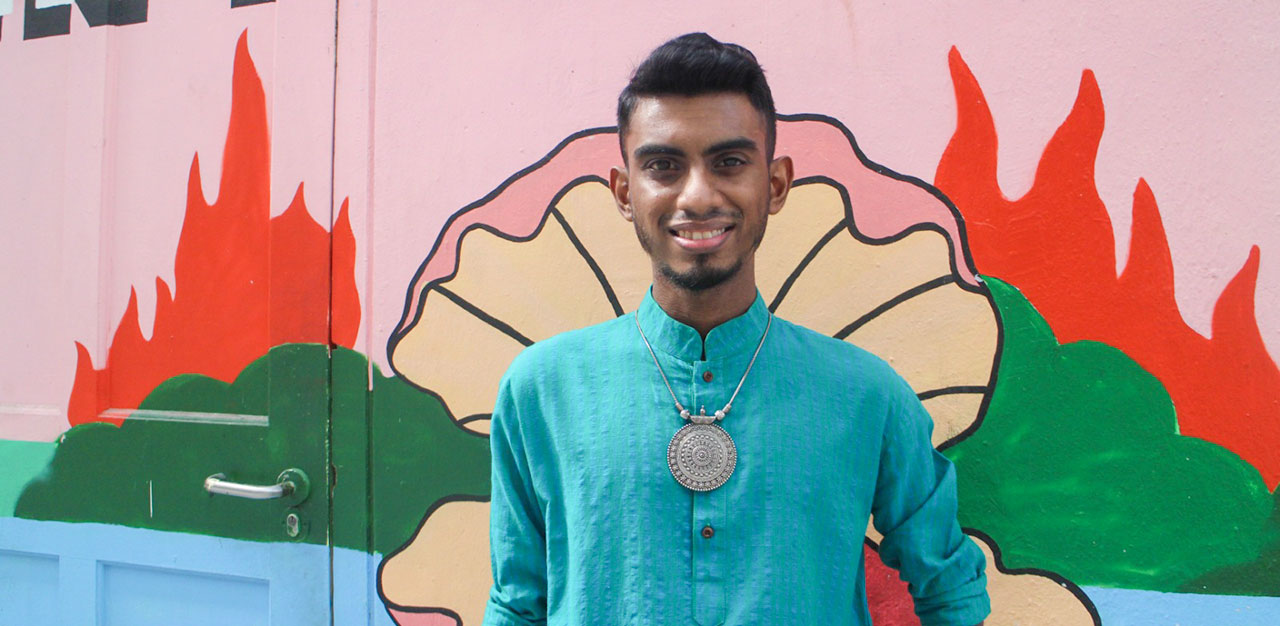
THG: How has the pandemic impacted you and TATTVA?
LCS: The pandemic has struck us quite a bit. Because we can’t physically meet and do productions, or really practice physically. I always have discussions online with my peers as well as the dancers. Because we are limited in numbers, we always practise in fives, especially phase two last year. We put everything on a physical stage onto a digital platform. So that was the biggest advantage. At that point I was very scared; how am I going to make my physical stage performance of theatre into a digital setting? Will it be appealing, will it be nice? What will my audience think about this? Will we face setbacks? But I think the whole lens changed, about theatre moving into a digital setting. You tend to find avenues to work with new people like videographers, cinematographers and people who are passionate about short films and movies. When they come to collaborate with you, then there’s like another world of ideas that’s coming up from an artistic setting to a commercial setting.
THG: Have you been enjoying this creative approach with new people?
LCS: Even though I miss the physical theatre setting, having a [live] audience, and performing and feeling that satisfaction of [the] audience loving it, I think I’m loving this because it’s a quiet time, you can work, focus on just what you want.
Join the conversations on TheHomeGround Asia’s Facebook and Instagram, and get the latest updates via Telegram.


